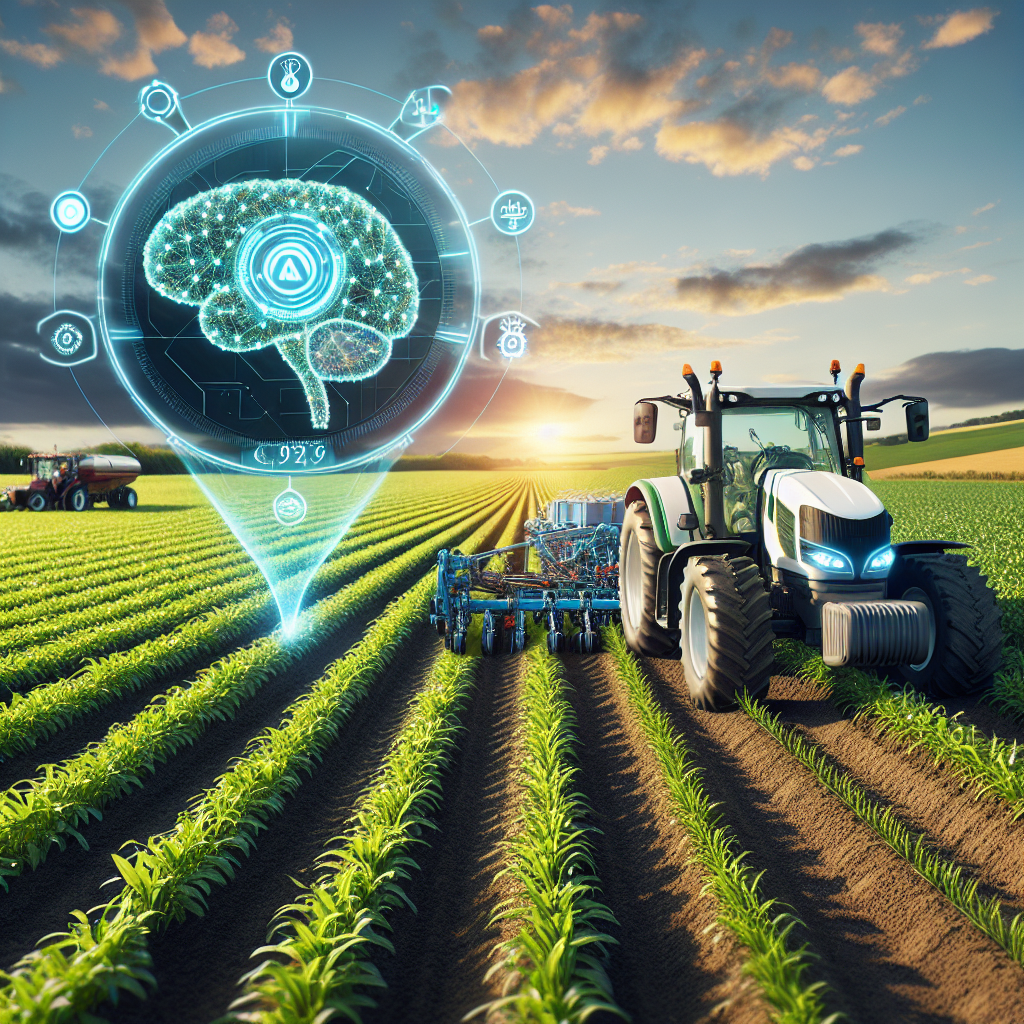With the world’s population growing rapidly, the demand for food is increasing at an unprecedented rate. In order to meet this demand, farmers need to maximize their crop yields while minimizing costs. One way to achieve this is through the use of predictive maintenance in agriculture, which involves using artificial intelligence (AI) to predict when equipment is likely to fail so that maintenance can be performed proactively, rather than reactively.
Predictive maintenance has been used in various industries for many years, but its application in agriculture is relatively new. By harnessing the power of AI, farmers can monitor the condition of their equipment and predict when maintenance is needed, allowing them to avoid costly downtime and improve the overall efficiency of their operations.
There are several ways in which AI can be used for predictive maintenance in agriculture. One of the most common methods is to use sensors to collect data on the condition of equipment, such as temperature, vibration, and pressure. This data is then fed into an AI algorithm, which analyzes it to predict when maintenance is likely to be needed. By monitoring equipment in real-time, farmers can identify potential issues before they become serious problems, allowing them to take corrective action before a breakdown occurs.
Another way in which AI can be used for predictive maintenance in agriculture is through the use of machine learning algorithms. These algorithms can analyze historical data on equipment performance and use this information to predict when maintenance is likely to be needed in the future. By continuously learning and adapting to new data, machine learning algorithms can improve the accuracy of their predictions over time, leading to more reliable maintenance schedules and reduced downtime.
One of the key benefits of using AI for predictive maintenance in agriculture is the ability to optimize maintenance schedules. By predicting when maintenance is likely to be needed, farmers can schedule maintenance tasks during periods of low activity, minimizing disruption to their operations. This can help to improve the overall efficiency of the farm and reduce costs associated with unplanned downtime.
Additionally, predictive maintenance can help to extend the lifespan of equipment by identifying and addressing potential issues before they become serious problems. By performing maintenance proactively, farmers can prevent costly breakdowns and avoid the need for expensive repairs or replacements.
Overall, using AI for predictive maintenance in agriculture can help farmers to improve the reliability and efficiency of their operations, reduce costs, and increase crop yields. By harnessing the power of AI to predict when maintenance is needed, farmers can take proactive steps to keep their equipment in optimal condition and ensure the success of their farming operations.
FAQs:
Q: How does AI predict when maintenance is needed in agriculture?
A: AI uses sensors to collect data on the condition of equipment, such as temperature, vibration, and pressure. This data is then fed into an AI algorithm, which analyzes it to predict when maintenance is likely to be needed.
Q: What are the benefits of using AI for predictive maintenance in agriculture?
A: The benefits of using AI for predictive maintenance in agriculture include optimizing maintenance schedules, improving equipment reliability, reducing costs, and increasing crop yields.
Q: How can farmers implement AI for predictive maintenance in agriculture?
A: Farmers can implement AI for predictive maintenance in agriculture by installing sensors on their equipment, collecting data on equipment performance, and using AI algorithms to analyze this data and predict when maintenance is needed.
Q: Is AI for predictive maintenance cost-effective for farmers?
A: Yes, AI for predictive maintenance can be cost-effective for farmers as it can help to reduce costs associated with unplanned downtime, expensive repairs, and equipment replacements.
Q: What are some examples of AI technologies used for predictive maintenance in agriculture?
A: Some examples of AI technologies used for predictive maintenance in agriculture include machine learning algorithms, sensor networks, and predictive analytics software.
In conclusion, using AI for predictive maintenance in agriculture can help farmers to improve the efficiency and reliability of their operations, reduce costs, and increase crop yields. By harnessing the power of AI to predict when maintenance is needed, farmers can take proactive steps to keep their equipment in optimal condition and ensure the success of their farming operations. As the technology continues to evolve, we can expect to see even greater benefits from using AI for predictive maintenance in agriculture in the future.

